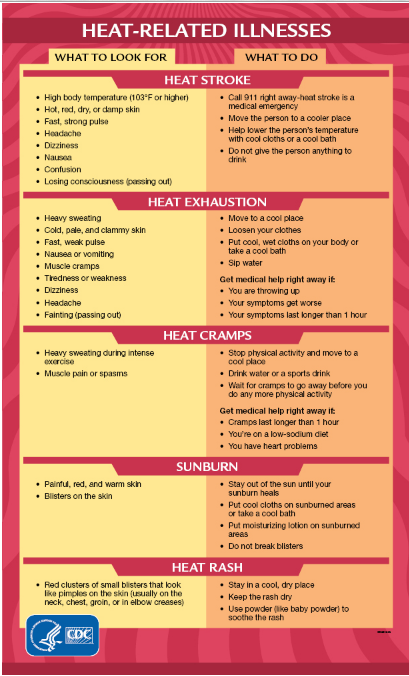#16,887
July is typically the hottest month of the year in the United States, and this year much of Europe is experiencing record heat as well. NOAA's 30-day heat/precipitation forecasts for July (see chart above) predicts much of the country can expect above average temperatures.
The following NOAA temperature forecast is for Thursday (Jul 21st), but similar conditions are expected all of this week in the central and southern parts of the country.
Some power grids are already strained to the max (see Texas grid takes emergency actions to avoid blackouts amid heatwave), and NOAA has issued an aggressive forecast 2022 Atlantic Hurricane Season Outlook, meaning that in addition to the heat, many of us could face extended power outages this summer.
While many people worry about tornadoes, or hurricanes, heat waves claim more lives than any other weather phenomenon. Excessive heat has likely killed more Americans over the past 50 years than all of the tornadoes, floods, and hurricanes combined.
In 2002 Rupa Basu and Jonathan M. Samet wrote in the Journal Epidemiological Reviews (see Relation between Elevated Ambient Temperature and Mortality: A Review of the Epidemiologic Evidence):
An average of 400 deaths annually are counted as directly related to heat in the United States, with the highest death rates occurring in persons aged 65 years or more (3). The actual magnitude of heat-related mortality may be notably greater than what has been reported, since we do not have widely accepted criteria for determining heat-related death (4, 5–7), and heat may not be listed on the death certificate as causing or contributing to death.This disparity between counted and estimated heat-related deaths can be illustrated by the reports from the infamous heat wave of 1980, which `officially’ claimed `more than 1250 lives’ (cite NOAA Heat Wave: A Major Summer Killer) but which unofficially may have killed as many as 10,000 (Tracking and Evaluating U.S. Billion Dollar Weather Disasters, 1980-2005 (Lott and Ross, 2006).
Eight years later, a heat wave across the central and eastern part of the nation killed as many as 7,500 people (cite). More recently, in 1999, a prolonged heat wave along the Eastern seaboard is believed to have killed 500 (cite).Between climate change, growing urban populations, and increasingly fragile infrastructure - particularly involving the power grid - the public health threat from prolonged heat waves is only expected to rise.
Having sweltered-in-place following hurricanes and other summer power outages, I've take some aggressive preparedness steps, including having plenty of water stockpiled, and creating some `cooling' options for when the power is out.
For me, the easiest, and least expensive option was to buy one or more solar powered USB batteries (see below) and several USB powered fans.
 |
| Battery, Solar Panel, Fan & Light - About $50. |
While limited in terms of what they can power (and for how long), these setups are ideal for those who need a light weight bug-out friendly solution, or for anyone who isn't comfortable with creating more complex systems.(Note: Newer products now have 20,000 and 25,000 milliamp batteries and larger (4 fold) solar panels)
I also maintain a couple of 12-volt automotive batteries on a trickle charger, for use with a 12-volt automotive fan. For more on solar power solutions, you may wish to revisit My New (And Improved) Solar Battery Project (for CPAP) and My New Solar Power System (Updated For 2020)).
Some timely advice comes from the CDC's EXTREME HEAT website. Follow the link to learn to learn how to prepare for, and respond to, extreme heat events.
And for some advice on recognizing heat-related illnesses, and what to do about them, the CDC provides the following guidance.
Although we can't control the weather, of the delivery of electricity to our homes, a little bit of preparedness can go a long way towards converting a miserable situation (or worse) into simple inconvenience.



